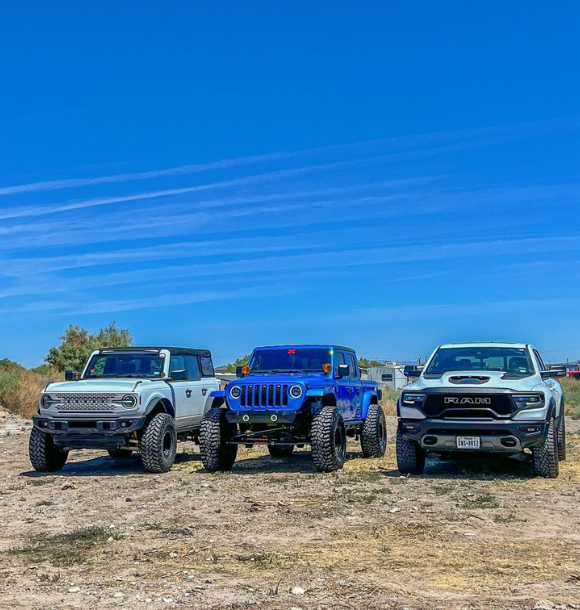Urban Versus Rural: How Car Preferences Change Based on Environment
Car preferences can vary significantly between urban and rural environments, driven by the unique needs and challenges posed by each setting. Understanding these preferences is crucial in catering to the diverse demands of consumers in different areas.
In urban areas, where space is limited and traffic congestion is a common issue, certain car preferences emerge. Compact and fuel-efficient cars are popular choices due to their maneuverability and cost-effective nature. Electric and hybrid cars also gain traction, reflecting the growing emphasis on sustainable transportation. The rise of car sharing and ride-hailing services provides alternative options for urban dwellers looking for convenience and flexibility.
On the other hand, rural areas present different requirements. SUVs and trucks are favored due to their durability, spaciousness, and ability to navigate rugged terrain. Features like all-wheel drive and off-roading capabilities are prioritized, as they enable rural residents to tackle challenging road conditions and unpaved surfaces. Towing capacity is highly valued in rural areas, supporting activities such as hauling equipment or transporting goods.

Several factors shape these car preferences in urban and rural areas. Commute distance and traffic influence the need for compact cars in cities, while parking availability and cost play a role in determining suitable options. In rural areas, road conditions and terrain affect the choice of vehicles that can handle unpaved roads and offer stability in challenging environments.
The economic and environmental impact of these preferences is also significant. Urban areas grapple with issues like air pollution and emissions, making the adoption of electric and fuel-efficient cars crucial for mitigating environmental impact. Conversely, the fuel consumption and efficiency of larger vehicles in rural areas can have implications for both individuals and the community. Infrastructure and urban planning also play a role, as accommodating diverse car preferences requires considerations such as parking infrastructure and improving public transportation options.
By examining and understanding the evolving car preferences in urban and rural areas, policymakers, manufacturers, and consumers can make informed choices that align with specific needs, address environmental concerns, and promote efficient transportation systems.
Key Takeaways:
- Compact and Fuel-Efficient Cars: In urban areas, the preference is for smaller cars that are fuel-efficient. This is due to the limited parking spaces, traffic congestion, and the need for cost-effective commuting.
- Electric and Hybrid Cars: Urban dwellers show a higher inclination towards electric and hybrid cars to minimize environmental impact and reduce air pollution in densely populated areas.
- Car Sharing and Ride-Hailing Services: With the convenience and cost-effectiveness they offer, urban residents are more inclined towards using ride-hailing services and participating in car-sharing programs, which reduce the reliance on personal vehicle ownership.
- SUVs and Trucks: In rural areas, the preference shifts towards larger, more rugged vehicles like SUVs and trucks. These vehicles are favored for their off-roading capabilities, towing capacity, and ability to navigate rough terrain often found in rural environments.
- All-Wheel Drive and Off-Roading Capabilities: Rural residents prioritize vehicles with all-wheel drive and off-roading capabilities to handle unpaved roads, snow, mud, and other challenging terrains frequently encountered in rural areas.
- Towing Capacity: The ability to tow heavy loads, such as trailers or equipment, is an important factor in rural car preferences, where agricultural and industrial activities often require hauling large items long distances.
- Commute Distance and Traffic: The distance traveled and the presence of heavy traffic significantly impact car preferences in both urban and rural areas. In urban areas, short commutes and congested roads favor compact cars and alternatives like ride-hailing services, while longer distances in rural areas necessitate vehicles with greater fuel efficiency.
- Parking Availability and Cost: Limited parking availability in urban areas leads to a preference for smaller vehicles. In contrast, rural areas typically have ample parking space, allowing for larger vehicles like SUVs and trucks.
- Road Conditions and Terrain: The condition of roads and the terrain in urban and rural settings influence car preferences. Urban areas have well-maintained roads, while rural areas often have unpaved roads and uneven terrains, driving the preference for vehicles capable of handling such conditions.
- Air Pollution and Emissions: Urban car preferences have a greater emphasis on environmental impact due to concerns about air pollution. Electric and hybrid cars are favored for their lower emissions, while rural car preferences focus more on towing capacity and off-roading capabilities.
- Fuel Consumption and Efficiency: Urban areas prioritize fuel efficiency and lower fuel consumption due to higher fuel costs and environmental concerns. Rural areas, with longer distances and fewer fueling stations, emphasize fuel efficiency but also require vehicles capable of carrying heavier loads efficiently.
- Infrastructure and Urban Planning: Urban car preferences are influenced by factors such as parking availability, traffic congestion, and the presence of charging stations for electric vehicles. Rural car preferences prioritize vehicles suited for existing rural infrastructure and roads.
- Exploring the evolving car preferences in urban and rural areas: Car preferences are subject to change based on evolving trends, technological advancements, and environmental consciousness. As urbanization and sustainability become more important, car preferences may shift towards more electric and shared mobility solutions in both urban and rural areas.
What is the significance of car preferences in urban and rural environments?
The significance of car preferences in urban and rural environments lies in the different needs and lifestyles of people in these areas. Here are the key factors that influence car preferences:
1. Urban Car Preferences:
1.1. Compact and Fuel-Efficient Cars: In dense urban areas, smaller cars are preferred due to limited parking and easier maneuverability in traffic.
1.2. Electric and Hybrid Cars: Urban dwellers opt for eco-friendly vehicles to reduce air pollution and emissions.
1.3. Car Sharing and Ride-Hailing Services: Availability of car-sharing and ride-hailing services in cities allows people to rely less on owning a car, providing convenience and cost savings.
2. Rural Car Preferences:
2.1. SUVs and Trucks: People in rural areas often require larger vehicles for off-road driving and carrying equipment.
2.2. All-Wheel Drive and Off-Roading Capabilities: Rural areas often have unpaved roads and challenging weather conditions, making all-wheel drive and off-roading capabilities essential.
2.3. Towing Capacity: Rural residents may need vehicles with higher towing capacities for agricultural use or recreational activities like towing trailers or boats.
3. Factors Influencing Car Preferences in Urban and Rural Areas:
3.1. Commute Distance and Traffic: Urban residents may prioritize fuel efficiency and compactness for congested roads, while rural residents may prioritize greater comfort for longer commutes.
3.2. Parking Availability and Cost: Urban areas have limited parking space and higher costs, influencing the preference for smaller cars. Rural areas often have ample parking space and lower costs, allowing for larger vehicles.
3.3. Road Conditions and Terrain: Urban areas have better-maintained roads, while rural areas may have rough terrains or unpaved roads, influencing the need for specific features like ground clearance.
4. Economic and Environmental Impact of Urban and Rural Car Preferences:
4.1. Air Pollution and Emissions: Urban areas have a higher concentration of vehicles, making air pollution and emissions a significant concern. Preference for electric or hybrid cars in cities helps reduce environmental impact.
4.2. Fuel Consumption and Efficiency: Fuel efficiency is critical in urban areas due to frequent stop-and-go traffic. In contrast, rural areas often have longer driving distances, increasing the importance of vehicles with good fuel consumption.
4.3. Infrastructure and Urban Planning: Urban areas require infrastructure for electric vehicle charging stations, while rural areas may need improved road conditions and accessibility.
Understanding these differences in car preferences between urban and rural environments is crucial for automakers, policy planners, and individuals in making informed choices tailored to their specific needs and circumstances.
Urban Car Preferences

Photo Credits @urbanautomotiveusa
When it comes to car preferences, the urban environment brings its own set of demands and considerations. In this section, we’ll explore the fascinating world of urban car preferences, diving into topics like compact and fuel-efficient cars, the rise of electric and hybrid vehicles, and the growing popularity of car sharing and ride-hailing services. Prepare to uncover the trends and choices that shape the automotive landscape of our bustling cities.
1. Compact and Fuel-Efficient Cars
When it comes to cars in urban areas, compact and fuel-efficient cars are preferred. Here are some reasons why:
- Easy maneuverability: Compact cars are smaller and easier to navigate through crowded streets and park in tight spaces. This is practical for urban dwellers dealing with traffic and limited parking.
- Fuel efficiency: Compact cars are designed to consume less fuel per mile compared to larger vehicles. This is especially important in urban areas with frequent stops and traffic congestion.
- Environmentally-friendly: Fuel-efficient cars produce fewer emissions, which helps improve air quality in densely populated urban areas.
- Cost-effective: Compact cars are generally more affordable to buy and maintain than larger vehicles. This makes them a practical choice for individuals living in urban areas with higher living costs.
- Parking advantages: Compact cars have the advantage of fitting into tight parking spaces. In some cities, there may be designated parking spots or discounted rates for compact cars.
2. Electric and Hybrid Cars

Photo Credits @conventioncenterla
Electric and hybrid cars are becoming increasingly popular due to their numerous benefits. These vehicles are gaining traction for a variety of reasons:
1. Environmental friendliness: One of the key advantages of electric and hybrid cars is their ability to emit fewer emissions compared to traditional gasoline-powered vehicles. By reducing greenhouse gas emissions and air pollution, these cars contribute to a cleaner and healthier environment.
2. Cost savings: Electric and hybrid cars offer significant fuel cost savings. With electricity being cheaper than gasoline, and hybrid cars boasting better fuel efficiency, drivers can save money on their transportation expenses. Government incentives and tax credits are often available, making these vehicles more affordable for consumers.
3. Energy efficiency: Electric cars are highly efficient in converting battery energy into forward motion, achieving a higher percentage of energy utilization. Hybrid cars, on the other hand, utilize regenerative braking and idle-off features to maximize their energy efficiency.
4. Technological advancements: Electric and hybrid cars come equipped with cutting-edge features such as regenerative braking, smart infotainment systems, and even self-driving capabilities. This showcases the continuous technological advancements in these vehicles, providing a more enhanced driving experience.
5. Reduced reliance on fossil fuels: Electric and hybrid cars play a significant role in reducing our dependence on fossil fuels. By consuming less gasoline and utilizing more sustainable energy sources, they contribute to a more sustainable and cleaner energy future.
The growing interest in electric and hybrid cars reflects a shift towards environmentally conscious and energy-efficient transportation options. As technology continues to improve and charging infrastructure becomes more accessible, these vehicles are expected to become even more prevalent in the future.
3. Car Sharing and Ride-Hailing Services

Photo Credits @ridealto
Car sharing and ride-hailing services, also known as car-sharing and ride-hailing services, have a significant impact on shaping car preferences in both urban and rural areas. These services offer a number of advantages to consider:
– Convenience: Car sharing and ride-hailing services provide a convenient and hassle-free alternative to owning a car. With just a few taps on your smartphone, you can easily book a ride and reach your destination without the stress of finding parking or dealing with maintenance.
– Cost-effectiveness: Car sharing and ride-hailing services are particularly cost-effective, especially for those who don’t require a car on a daily basis. Instead of the expenses associated with owning a car, such as insurance, fuel, and parking fees, you only pay for the specific trips you take.
– Reduced traffic and emissions: By utilizing car sharing and ride-hailing services, there is a decrease in the number of cars on the road, leading to reduced traffic congestion and lower carbon emissions. This contributes to a more sustainable and environmentally friendly transportation system.
– Flexibility: Car sharing and ride-hailing services offer a wide range of vehicle options to cater to diverse needs. Whether you need a compact car for a quick errand or a larger vehicle for a family outing, these services have the perfect choice for you.
– Enhanced safety: Ride-hailing services prioritize safety by implementing features such as driver background checks and real-time tracking. This ensures a safer travel experience compared to traditional taxis.
Rural Car Preferences
When it comes to car preferences, it’s fascinating to explore the differences between urban and rural environments. In this section, we’re diving into the world of rural car preferences. From SUVs and trucks to all-wheel drive and off-roading capabilities, and even towing capacity, we’ll discover what makes rural dwellers choose these vehicle features. So buckle up and get ready to explore the unique automotive choices that thrive outside the bustling urban centers.
1. SUVs and Trucks

Photo Credits @ariesautomotive
SUVs and trucks, the preferred choices in rural areas, offer a multitude of benefits.
These versatile vehicles are well-equipped to handle any terrain, thanks to their impressive capabilities and towing capacity.
With abundant cargo space, they prove to be perfect for transporting goods and equipment commonly found in rural areas.
The rugged tires and higher ground clearance enable them to tackle rough terrains and unpaved roads effortlessly.
Their all-wheel drive or four-wheel drive systems provide enhanced traction and stability.
Ideal for rural areas, SUVs and trucks are designed to tow heavy loads, whether it be trailers, boats, or horse trailers that are frequently used.
It’s worth noting that maneuvering these vehicles in tight spaces can be challenging, and their fuel efficiency is lower compared to other options.
The cost of maintenance and ownership for SUVs and trucks may be higher.
2. All-Wheel Drive and Off-Roading Capabilities
All-wheel drive and off-roading capabilities are crucial factors to take into account when selecting a car for rural areas. These features offer improved traction and stability on rough terrains and unpaved roads. Here are several reasons why these capabilities are desirable:
1. Enhanced traction: All-wheel drive (AWD) evenly distributes power to all four wheels, providing better grip on slippery or uneven surfaces. This is particularly useful in rural areas with poorly maintained roads or in harsh weather conditions.
2. Off-roading versatility: Rural areas frequently have unpaved roads, and off-roading capabilities enable vehicles to navigate through mud, gravel, or rocky paths. This is advantageous for farmers, hunters, or outdoor enthusiasts who require access to remote areas.
3. Adaptability: A vehicle equipped with all-wheel drive and off-roading capabilities can handle various driving conditions, both on-road and off-road. This makes it ideal for rural residents who encounter different road surfaces.
4. Safety: All-wheel drive and off-roading capabilities enhance traction and stability, lowering the risk of skidding or getting stuck in challenging terrains. This contributes to safer driving in rural areas.
5. Towing capacity: Many vehicles with all-wheel drive and off-roading capabilities have a higher towing capacity. This benefits rural residents who need to tow trailers, boats, or heavy loads for agricultural or recreational purposes.
By prioritizing all-wheel drive and off-roading capabilities when choosing a vehicle for rural areas, you ensure that the car can handle the specific challenges and demands of rugged and less-developed environments.
3. Towing Capacity
Towing capacity is a crucial factor to consider when selecting a car, particularly in rural areas where there may be a need to tow heavy loads. Here are some key points to keep in mind:
1. Prior to purchasing a car, it is important to check its specifications and determine its towing capacity. Cars with higher towing capacities are more adept at handling heavy loads.
2. A higher towing capacity provides greater flexibility for transporting trailers, boats, or caravans. It allows you to tow larger and heavier loads without putting strain on the engine or compromising safety.
3. It is essential to ensure that the towing capacity of the vehicle matches the weight of the load being towed. Going beyond the specified towing capacity can put strain on the vehicle and have a negative impact on its performance and safety.
4. In addition to towing capacity, it is also important to consider other factors such as engine power, suspension, and braking system. These factors contribute to the overall towing capability of the car and guarantee a smooth and safe towing experience.
5. Rural areas often have rough or uneven terrains. For this reason, a car with a high towing capacity and off-roading capabilities provides stability and control in such conditions.
By taking into account the towing capacity of a car, you can make an informed decision that aligns with your needs for recreational activities or work-related tasks in rural areas.
Factors Influencing Car Preferences in Urban and Rural Areas

Photo Credits @ariesautomotive
When it comes to car preferences in urban and rural areas, various factors come into play, shaping the choices of drivers. From commute distance and traffic to parking availability and cost, as well as road conditions and terrain, these elements heavily influence the cars we choose. In this section, we’ll explore how each of these factors impacts car preferences, uncovering intriguing insights into the diverse influences that shape our decisions behind the wheel.
1. Commute Distance and Traffic

Photo Credits @newyorkcity.explore
When deciding on a car, one must take into account the commute distance and traffic. These two factors play a crucial role in determining the best type of car for both urban and rural settings. Consider the following points:
– Efficiency: Compact and fuel-efficient cars are popular in urban areas with shorter commutes and heavy traffic. These vehicles offer better mileage and maneuverability, making them ideal for navigating congested city streets.
– Environmentally-friendly options: Electric and hybrid cars have gained popularity in urban areas due to their lower emissions and reduced reliance on fossil fuels. They are a great choice for those looking to minimize their impact on the environment and promote sustainability.
– Ride-sharing services: With the emergence of car sharing and ride-hailing services, many urban residents prefer these convenient alternatives to car ownership. The challenges of finding parking and the high costs associated with owning a vehicle in crowded cities have influenced this trend.
On the other hand, rural areas often have longer commutes and less traffic, leading to different car preferences:
– SUVs and trucks: Due to the need for off-road capabilities and larger sizes, SUVs and trucks are more popular in rural areas. They offer better performance on rugged terrains and provide more space for carrying equipment and towing.
– All-wheel drive and off-roading capabilities: In rural areas, where road conditions are often rough and uneven, vehicles with all-wheel drive are highly desired. These cars improve traction and stability, ensuring a safer and more reliable driving experience.
– Towing capacity: In rural areas where outdoor activities and agricultural work are common, a car with ample towing capacity is essential. Whether it’s towing a boat, trailer, or equipment, having a vehicle with sufficient towing capabilities is highly advantageous.
Both urban and rural car choices are greatly influenced by the commute distance and traffic. Understanding these factors helps individuals select a vehicle that suits their specific needs and ensures a more enjoyable driving experience.
2. Parking Availability and Cost
Parking availability and cost are two essential factors to consider when choosing a car, whether you are in an urban or rural area.
In densely populated urban areas, parking options are often limited and come at a high cost due to the high demand. This scarcity of parking spaces influences the type of cars people prefer – smaller and more compact vehicles that are easier to maneuver and park in crowded areas.
Another factor that affects car preferences in urban areas is the quality and availability of parking infrastructure. If there are well-maintained parking lots or garages with reasonable rates, people may be more inclined to choose larger vehicles like SUVs or trucks.
In addition to availability, the cost of parking is also a significant consideration, especially in urban areas where fees can accumulate over time. Some individuals may even opt for alternative transportation options or car-sharing services to avoid the expenses associated with owning a car and paying for parking.
While parking availability is generally not a major concern in rural areas, parking costs can still influence car preferences. In these areas, people may prefer vehicles with larger towing capacity or off-roading capabilities, as they provide convenience in limited parking situations, such as during outdoor activities or on unpaved roads.
It is crucial to take into account both parking availability and cost when choosing a car, regardless of whether you live in an urban or rural environment. These factors not only influence the type of vehicle preferred but also contribute to the overall costs associated with owning and using a car in different settings.
3. Road Conditions and Terrain
When selecting a vehicle, it is essential to take into account the road conditions and terrain. There are several key factors that should be kept in mind:
1. Road Quality: Urban roads are typically well-maintained and have a smooth surface, while rural roads can vary greatly in quality. Some rural roads may not be paved, have uneven surfaces, or even have potholes. This means that a vehicle with good suspension and durability is necessary.
2. Terrain: Urban areas generally have flat or gently sloping terrains, whereas rural areas can have more diverse landscapes, including hills or mountains. In order to navigate rough terrains effectively, cars with strong engines and good traction are ideal. This includes SUVs or vehicles equipped with all-wheel drive.
3. Weather Conditions: Urban and rural areas may experience different weather conditions. Rural areas may be more susceptible to extreme weather events. To ensure better stability and control, it is advisable to opt for cars with all-wheel drive or higher ground clearance.
Considering road conditions and terrain is vital when selecting a car that will perform well and ensure your safety on the road.
Economic and Environmental Impact of Urban and Rural Car Preferences

Photo Credits @urbanautomotive
Exploring the evolving car preferences in urban and rural areas, let’s dive into the economic and environmental impact of these choices. We’ll tackle the crucial aspects of air pollution and emissions, fuel consumption and efficiency, as well as the influence of infrastructure and urban planning. Buckle up for a ride through the fascinating world of how car preferences shape our environment and economy.
1. Air Pollution and Emissions
The topic of air pollution and emissions is imperative when considering car preferences, particularly in urban areas. Vehicle exhaust emissions play a significant role in contributing to air pollution in cities. Opting for cars that emit lower levels of pollutants is crucial in improving air quality and public health.
Electric cars, for instance, are an environmentally friendly option as they produce zero tailpipe emissions. Powered by electricity stored in batteries, they effectively reduce air pollution. Hybrid cars, on the other hand, combine a combustion engine with an electric motor, resulting in lower emissions and enhanced fuel efficiency.
In urban areas, compact and fuel-efficient cars are highly favored due to their lower emissions. These vehicles consume less fuel, emit fewer pollutants, and have less impact on air pollution compared to larger vehicles.
Promoting shared transportation through car sharing and ride-hailing services can significantly reduce air pollution by decreasing the number of vehicles on the road, thereby leading to reduced emissions.
By prioritizing vehicles with lower emissions, we not only contribute to cleaner air in urban areas but also actively combat climate change by reducing greenhouse gas emissions. It is crucial to choose vehicles that have a minimal impact on air quality and promote a healthier environment for everyone.
2. Fuel Consumption and Efficiency
Fuel consumption and efficiency are crucial when choosing a car in urban and rural areas. It’s important to select a vehicle that optimizes fuel usage and reduces emissions to minimize environmental impact.
| Car Type | Fuel Consumption (miles per gallon) | Efficiency Rating |
|---|---|---|
| Compact and Fuel-Efficient Cars | 35-40 | High |
| Electric and Hybrid Cars | 100+ (electric)/50-60 (hybrid) | Very High |
| SUVs and Trucks | 15-20 (SUVs)/12-18 (Trucks) | Low |
Urban car preferences lean towards compact and fuel-efficient cars, which have an average consumption of 35-40 miles per gallon. This choice reduces fuel costs and air pollution.
Rural areas often favor SUVs and trucks for their practicality and versatility. These vehicles have higher fuel consumption, averaging 15-20 miles per gallon for SUVs and 12-18 miles per gallon for trucks. This lower efficiency results in increased fuel costs and carbon emissions.
Electric and hybrid cars are also gaining popularity in both urban and rural areas, offering significantly higher fuel efficiency with consumption rates above 100 miles per gallon for electric cars and 50-60 miles per gallon for hybrids. These vehicles provide a greener option, reducing dependency on fossil fuels and minimizing pollution.
Choosing a car with good fuel consumption and efficiency is environmentally conscious and can save money in the long run. It’s essential to consider these factors to make an informed choice that aligns with one’s needs and values.
3. Infrastructure and Urban Planning
When it comes to car preferences, infrastructure and urban planning are essential in both urban and rural areas. Here is a table that highlights the significance of infrastructure and urban planning:
| Urban Areas | Rural Areas |
| Well-planned roads and highways are crucial in urban areas to ensure smooth traffic flow and reduce congestion. | Rural areas require infrastructure that supports transportation on uneven terrains, such as well-maintained gravel roads or off-road trails. |
| Ample parking facilities are necessary in urban areas to accommodate the high population density and limited parking spaces. | In rural areas, parking spaces may be more widely available, but they need to cater to larger vehicles like SUVs and trucks. |
| Public transportation systems like buses, trains, and trams are integral to urban areas, reducing the reliance on private cars. | In rural areas, reliable and frequent bus or shuttle services become essential, especially when public transportation is limited. |
| Urban areas need infrastructure for electric vehicle charging stations to promote the adoption of electric and hybrid cars. | Rural areas might require infrastructure for fuel stations and towing services to support the use of larger vehicles and long-distance travel. |
Infrastructure and urban planning significantly impact car preferences in both urban and rural areas. The availability and quality of roads, parking spaces, public transportation, and charging stations influence the types of vehicles preferred by individuals residing in different environments. City planners and policymakers must consider these factors when creating sustainable and efficient transportation systems that meet the diverse needs of urban and rural communities.
Exploring the evolving car preferences in urban and rural areas

Photo Credits @ariesautomotive
Exploring the evolving car preferences in urban and rural areas reveals distinct choices based on different environments.
In urban areas, compact and fuel-efficient cars are favored for navigating busy city streets and limited parking spaces. Electric and hybrid cars are gaining popularity due to reduced emissions and lower fuel consumption. Car-sharing and ride-hailing services also influence urban dwellers’ preferences.
On the other hand, rural areas lean towards SUVs and trucks for more space and versatility. All-wheel drive and off-roading capabilities are valued for navigating challenging road conditions, and towing capacity is important for transporting equipment or trailers.
Commute distance and traffic influence car preferences in both urban and rural areas. In urban areas, short commutes and heavy traffic favor smaller vehicles, while rural areas prioritize comfort and durability due to longer commutes and less traffic.
Parking availability and cost play a role, especially in urban areas with limited spaces and high fees. In rural areas, parking availability is less of a concern.
Road conditions and terrain differ, with urban areas generally having better-maintained roads. This influences preferences for vehicles with better suspension and handling capabilities in rural areas.
Exploring the evolving car preferences in urban and rural areas highlights the varying needs and priorities based on the environment. It is essential to consider these factors when choosing a vehicle that aligns with one’s lifestyle and surroundings.
Frequently Asked Questions
How does the built environment affect car ownership and use?
The built environment, which consists of physical and social elements in a community, has been found to influence travel behavior, including car ownership and use. Studies have identified various built environment characteristics that affect car dependency, such as land use characteristics, population density, transportation infrastructure, and proximity to amenities.
What is the impact of urbanization on car preferences?
Urbanization tends to reduce population growth and leads to lower per capita resource consumption compared to rural areas. Dense urban areas have a smaller ecological footprint per capita and often have better infrastructure, leading to lower car dependency. Thus, urban residents are more likely to rely on alternative modes of transportation, such as public transit, walking, or biking, which may reduce car ownership and use.
How do spatial effects influence the relationship between the built environment and car dependency?
Spatial effects play a significant role in the interaction between the built environment and car dependency. Spatial autocorrelation, which refers to the dependence between neighboring locations, affects travel behavior. Understanding spatial effects is crucial for developing targeted and sustainable urban planning strategies that consider local land use characteristics and mitigate car dependency.
Do urban areas have better environmental quality compared to rural areas?
Contrary to common belief, urban areas often have lower per capita resource consumption and smaller ecological footprints compared to rural areas. While suburban areas may have more green cover, it is often artificially maintained. Rural areas face challenges such as poor air quality due to indoor pollution and increased vulnerability to natural hazards like tornadoes and earthquakes.
How do transportation policies impact car preferences in urban and rural areas?
Transportation policies play a crucial role in shaping car preferences in urban and rural areas. Policies that support sustainable transportation options, such as improved public transit, walking, and biking infrastructure, can reduce car dependency in urban areas. In contrast, rural areas often require policies that focus on providing adequate transportation options, considering the larger distances and dispersed population.
What are the advantages of high-density living in urban areas?
High-density living in urban areas can offer several advantages. Clustering and proximity facilitate access to amenities, jobs, healthcare, and social interactions. High-density urban areas have a smaller ecological footprint per capita, leading to lower energy consumption and reduced resource consumption. Urban areas provide opportunities for social interaction and a vibrant community life, which can contribute to overall well-being.
